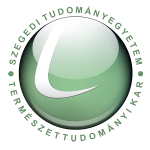| Kecskemet Arboretum Herbs Study trail | |
| About Arboretum |
European Wild Apple - Malus sylvestris Habitat · Native to Europe from as far south as Spain. · Italy and Greece to as far north as Scandinavia and Russia. Habit and Form · The truly wild tree has thorns. · Its scientific name means "forest apple". · Its leaves are food of the caterpillars of the Twin-spotted. · typical altitude 10 m · letters with ovate shaped, serrated edge · folding often thorny Flowers · The flowers are hermaphrodite · are pollinated by insects · with a pink or white colour · open in a time with foliage springing Fruit · tiny · generally green, possibly red · acrid · Rawly cannot be fed Bark · Dark brown, greyish Use: · greasier and games flavouring · compote, fruit jelly and fruit wine can be prepare. Healing effect: Agent: Vitamin C, protein, fruit acid, pectin Appetite and digestion stimulating, refreshing, roborant, agains gastro-enteritis. Can be applied when having diorrhea, constipation, heart disease, angina pectoris, cancer, diabetes, lead poisoning or wound infection. Apple peel should be eaten as well because of the many kinds of healing effects it has. There is more energy in green apples. Apple leaves contain antibiotics so they can be used well for pre-treatment of wounds until cleaning/dressing them It is said in England that ’An apple a day keeps the doctor away’. The freshly grated apple skin has beneficial effects while diorrhea, its high pectin content balances the bowel movements. The consumption of apple with peel stimulates digestion, lowers blood-pressure and cholesterol, and detoxifies the body in general. Can be used: Dried, as jam, stewed fruit, compote, juice, sauce, in sweets, as wine, tea, puree, and vinegar. Contraindication: Avoid the consumption of apple seeds, because it contains toxic cyanide!
|
| Study Trail's Herbs | |
| Herbal basics | |
| Resources | |
| Impressum | |
| Gallery | |
 |
|
|
Sponsors: |
|



